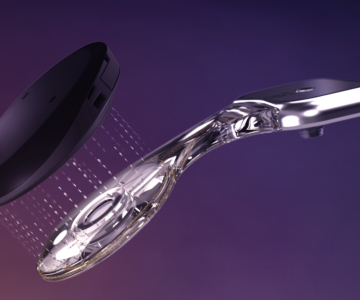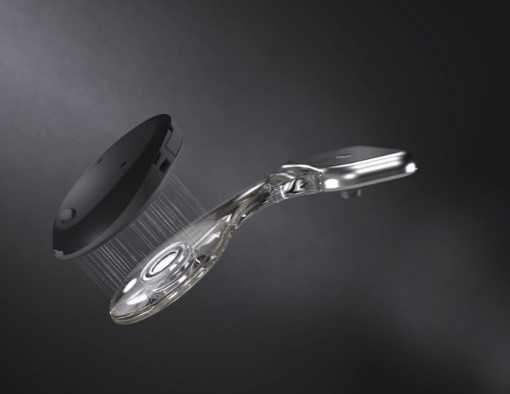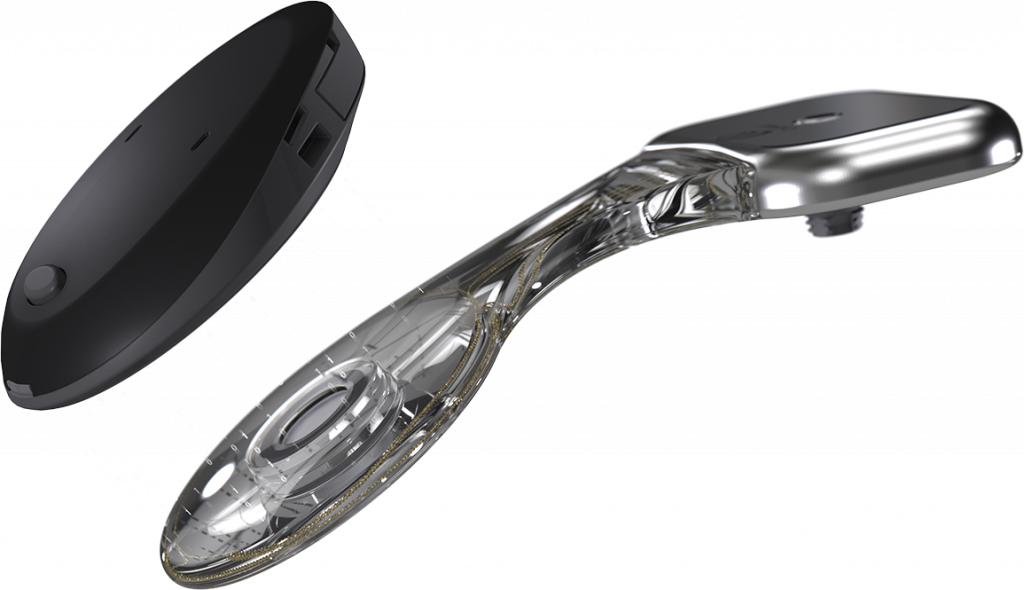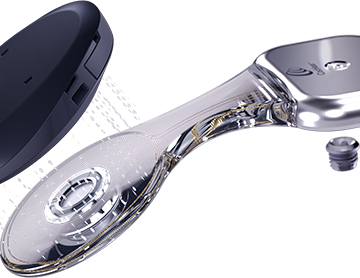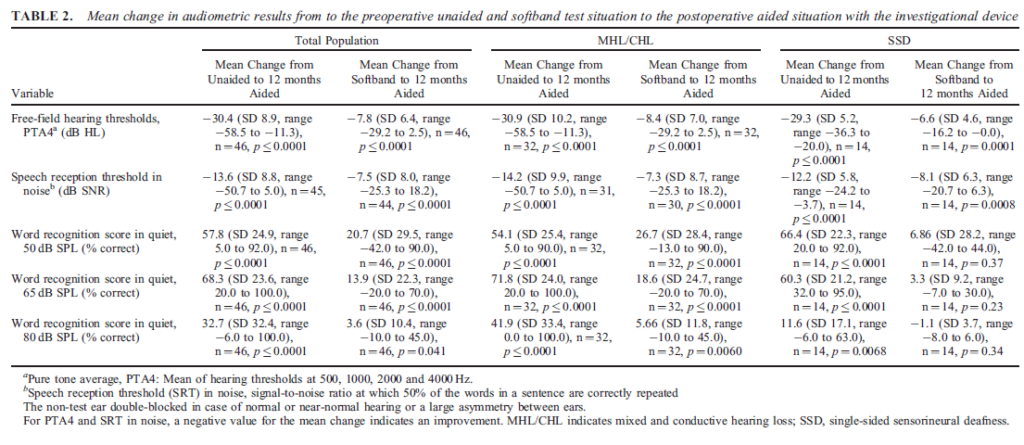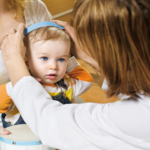Clinical History and Description
Sam was born with bilateral atresia and microtia and was adopted at four years of age. His family history and previous audiological information are unknown. His adoptive mother did report previous imaging to her knowledge was consistent with missing ossicles. He did arrive to his adoptive family wearing a bone conduction hearing device fit to a Softband. This device was fit unilaterally and was a loaner device from a charity organization. It is unknown when an Audiologist had fit the loaner Softband on Sam. He was placed in a total communication (TC) classroom when he started school. His mother reports that he had no intelligible words at the time of his adoption.
Audiological Testing
At five years and seven months of age, Sam was seen at Cook Children’s Medical Center in Fort Worth, Texas by Audiology and ENT. His ENT physician ordered an updated CT scan and the results were as follows: bilateral microtia and atresia, bilateral dysplastic ossicular chain, bilateral lateral SCC/vestibular abnormalities, mild narrowing basal turn right cochlea, and abnormal location of facial canal. Audiological results were consistent with a moderate conductive hearing loss for both ears (See Table 1). Audiological recommendations were to fit Sam with a bilateral Cochlear™ Baha® 5 on a Softband until further surgical/medical decisions were made.
Table 1. Unaided Test Results Initial Audiological Evaluation
| 250 Hz | 500 Hz | 1000 Hz | 2000 Hz | 4000 Hz | 8000 Hz | |
| Right Ear Air | 60 dB | 65 dB | 65 dB | 65 dB | 65 dB | 45 dB |
| Left Ear Air | 70 dB | 75 dB | 55 dB | 55 dB | 65 dB | 50 dB |
| Right Ear Bone | 5 dB | 10 dB | 10 dB | 10 dB | ||
| Left Ear Bone | 10 dB | 10 dB | 5 dB | 5 dB |
Sam was fit with two Baha 5 processors on a bilateral Softband two months after initial audiological testing at Cook Children’s Medical Center. Aided testing for Sam utilizing the bilaterally fit bone conduction devices revealed thresholds within the slight hearing loss to normal hearing range in sound-field.
Sam was evaluated again at a one-month follow-up appointment (See Table 2). During this follow up appointment, Sam’s mother reported a vast change in hearing and listening abilities after the bilateral fitting. The family reported that Sam could now say all his family members’ names and follow many auditory commands at home. Sam was given a SoundArc during this appointment after his mom reported that he complained about his hair sticking out with the Softband.
Table 2 – Aided Results at 1 Month
| 250 Hz | 500 Hz | 1000 Hz | 2000 Hz | 4000 Hz | 6000 Hz | |
| Right Ear Aided | 20 dB | 20 dB | 20 dB | 20 dB | 25 dB | 20 dB |
| Left Ear Aided | 20 dB | 15 dB | 15 dB | 15 dB | 15 dB | 20 dB |
| Bilateral Aided | 20 dB | 15 dB | 15 dB | 15 dB | 20 dB | 15 dB |
At four months after initial fitting of the Baha, Sam’s mother reports a “HUGE improvement using two Bahas versus one Baha” and he continues to use two Baha 5 sound processors with his SoundArc daily. After the improvements seen by the family, Sam was moved from a total communication hearing impaired program into a regular public school. Sam’s family reported this school transition has been amongst the biggest issues they have worked through over their first year with Sam. In the new school, Sam is required to use his voice and not depend on sign language for communication. His mom reported ‘second guessing’ their decision to move Sam as they had gone against the advice of his previous school. However, they have seen Sam excel so quickly they are now very proud of their decision. Sam has had a huge improvement in his speech and his family reports that he seems more confident and happy at home also. They also report that at home Sam has begun to initiate conversations with his family independently now.
Thoughts for the Reader
- For what patients would you consider a bilateral fitting over a unilateral fitting?
- What families and patients would you consider a SoundArc over a Softband?
- What are some additional educational or speech considerations needed for patients with delayed access to amplification?
- When there are slightly poorer aided results at 4000 Hz or otherwise with Softbands or SoundArc, what would be the impact on the child’s speech and language development? How can this be addresses audiologically?
- At what point would you consider suggesting a surgical option for Sam now that he is over 5 years of age? What clinical and social factors might play into this decision? At what point would you start discussing a surgical option with the family? How would you explain the potential benefits of transitioning to a surgical option to Sam and his family?
Learn more about Cochlear’s bone conduction solutions including the Baha 5 portfolio!
About our guest author: Lisa Christensen, AuD, is the Audiology Program Manager at Cook Children’s Medical Center in Fort Worth, Texas and currently serves as President of the American Academy of Audiology.


